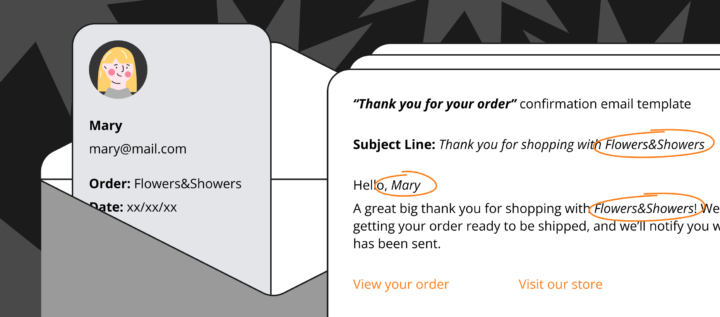What’s wrong with your mailing list and how to fix it
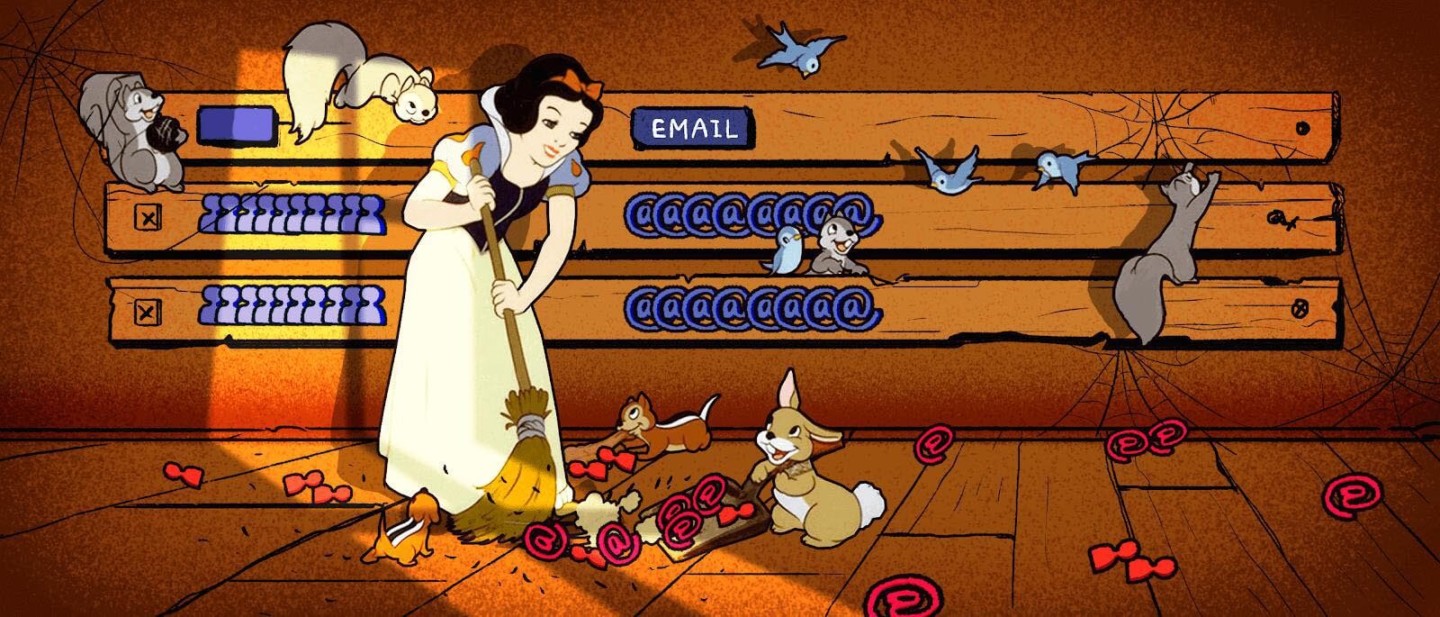
Hi there! In this article, we’ll tell you how to make your 2020 the year of a high Open Rate and to celebrate your email marketing. Let’s go!
Promotional emails have changed a lot. Now they are rather a long-term customer communication tool than a way of pursuing high Open Rate and high conversion rates to purchase by all means after any email. Working on your emails requires a scrupulous approach, and having a quality base is key.
What can go wrong?
Meet Nick who is responsible for marketing. Nick operates the mailing list with 15 000 email addresses that everyone feels so proud about. Each week, he’s drawing up an email to all subscribers with their news or “Product of the week” stories. The email tool costs $150 monthly. Nick loves emails he’s sending to their customers, but they don’t love them back. The Open Rate is always below 5%, and emails often get marked as spam. Why is that happening?
You can spend 10 years collecting your list, cherish every subscriber and treasure memories, but — deal with it — sometimes you have to clean it up. Here are a few possible red flags.
1. Low Open Rate and Click Rate
You can consider any indicators, but we recommend you to compare them to the average values of your industry. If they are significantly lower, your base is probably in trouble, and no experiments with the content can save you.
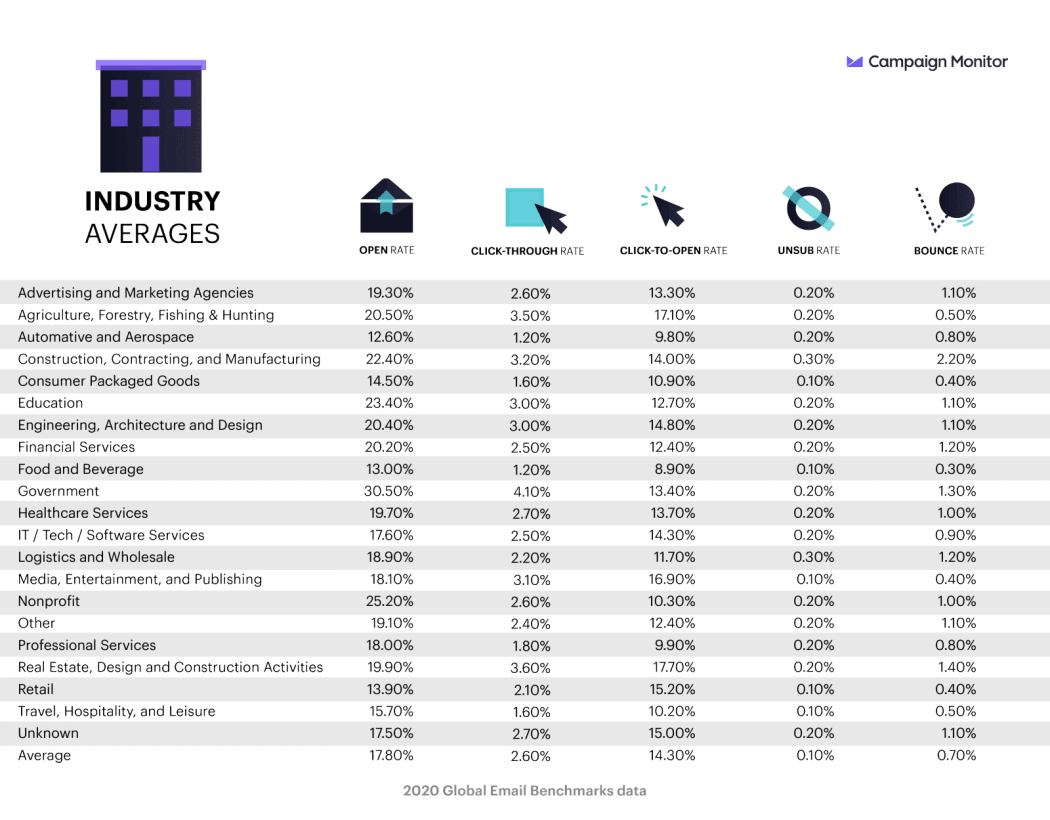
2. Poor domain reputation
Emailing services score senders by the level of trust towards them. This depends on how often your emails are marked as spam, how often your customers delete them without even reading, and what Open Rate of your emails is. The worse these indicators, the lower your sender score is and the more often your emails go the “Junk” folder.
To track your sender score, you can connect the postmaster tools of one of the largest providers like Gmail, or you can send emails using Dashly and see your rating directly in the dashboard.
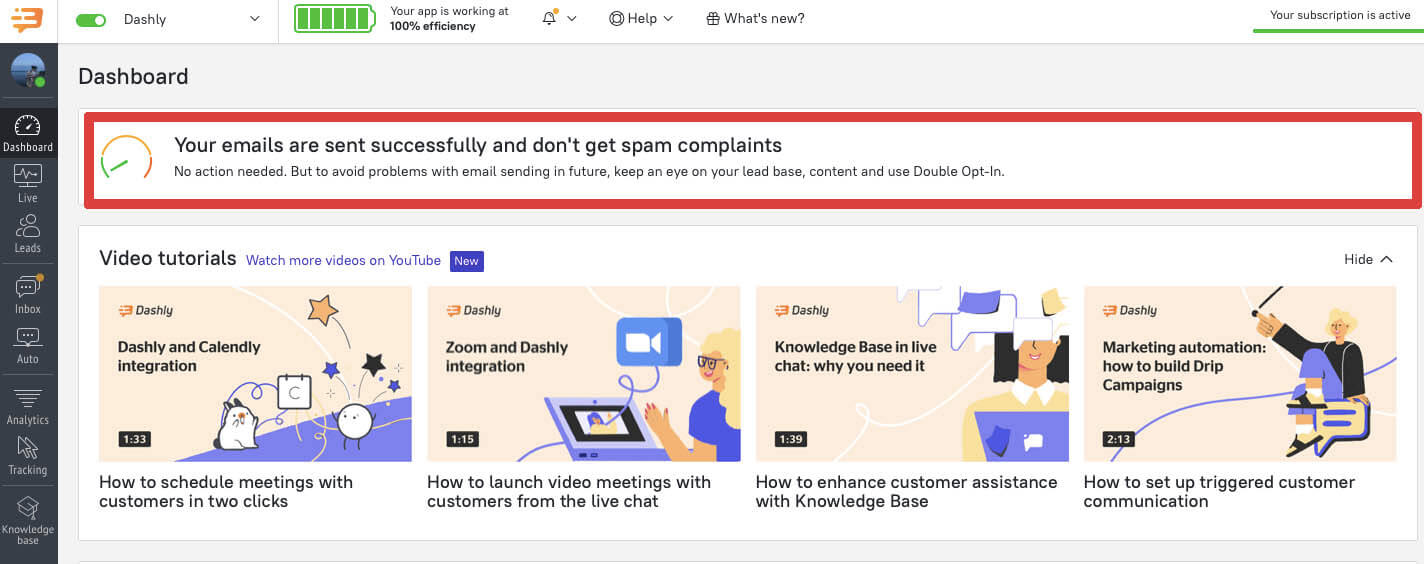
3. Emails go to spam
This problem is related to the previous one: the lower your score is, the more often your emails go to “Junk”; the more often your emails go there, the lower your score is. It’s a vicious circle, right?
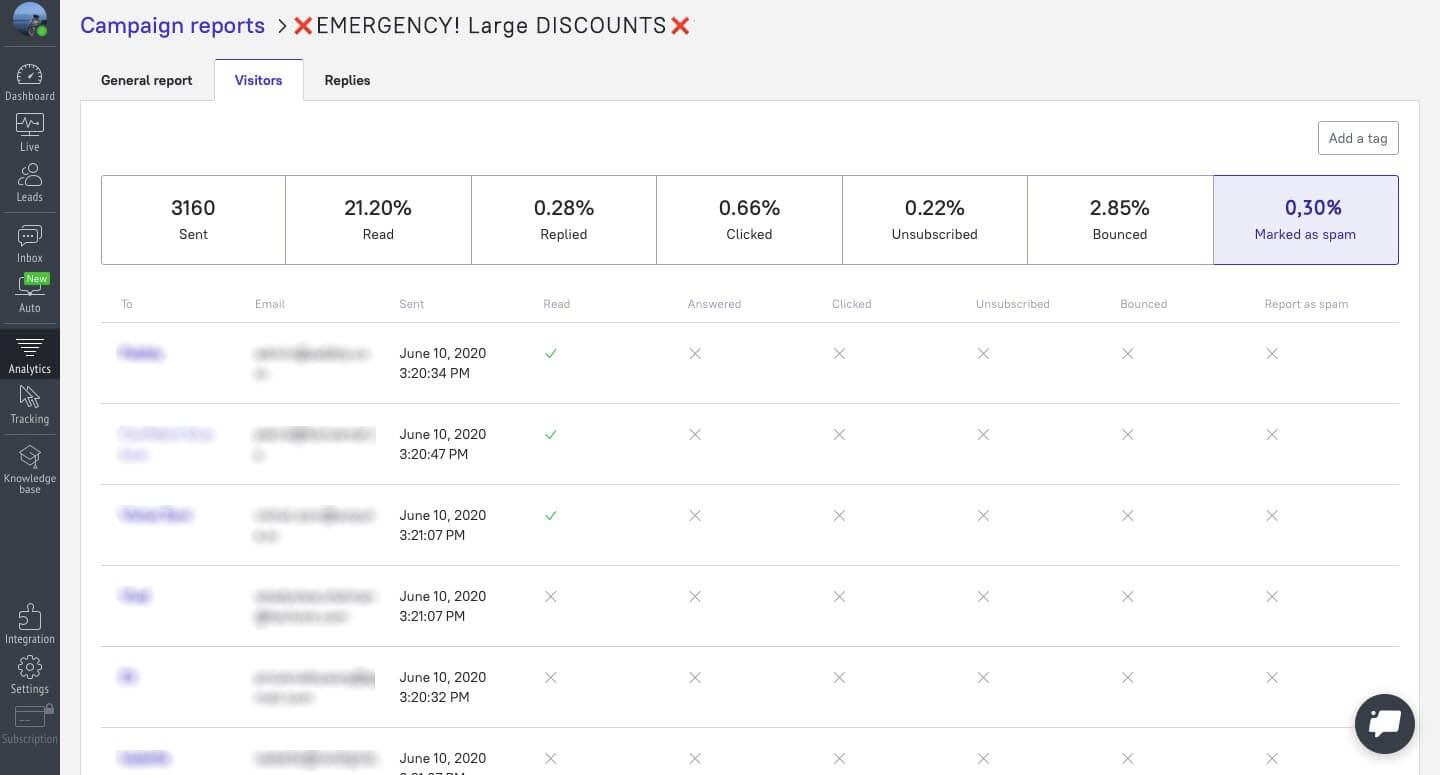
4. High unsubscribe rate
According to the Campaign Monitor report for 2020, if your unsubscribe rate is 0,1%, you’re fine. If your unsubscribe rate is much higher, it will negatively affect the score and email delivery.
5. You’re paying too much for inactive users
Most emailing platforms charge you for the size of your base.The more leads you have, the more expensive your plan is. Why should you pay for 10 000 users if only 3 000 users open your emails on average?

After all, why did everything go wrong?
You used to think you have a great subscriber list that will boost your sales manyfold and make email marketing your major tool. Why didn’t that happen?
Your email subscriber list is old
Many users have long abandoned their mailboxes and moved to new ones. Emails go nowhere: no one reads them, no one opens them nor clicks the links in them.
There are spam traps in your mailing list
Spam traps are fake email addresses created by providers to check the sender. Maybe no one used these addresses and they were created intentionally to catch you. In some cases, spam traps can be email addresses that used to belong to someone, but now are inactive. If you have such emails on your list, this is a red flag for the provider. The first case means you used malicious methods to collect your emails, and the second one indicates you haven’t cleaned it up for a long time.
Luckily, there are platforms allowing you to check if there are spam traps or invalid emails in your base, ZeroBounce.
You’ve bought your mailing list
First of all, you’ll probably have a lot of spam traps in your base. Second, these users didn’t give their consent to receive emails from you — you are likely to get a low score and a high unsubscribe rate and many spam reports.
Only scammers can buy ready-made address lists and send low quality emails to them. These lists can be relevant, but reputational risks are too high as you can send emails to invalid addresses and spam traps and destroy your reputation. If you care for it, collect emails on your own.
How can it all be fixed?
You need to clean up your mailing base from time to time, that is, remove idle emails and the ones who are not interested in hearing from you. You need to be very careful here regarding who you have to say goodbye to and who you can retain.
Bounced emails
Bounce Rate is the number of your leads who didn’t get your emails. A server typically returns such emails when there are delivery issues: full mailbox or an invalid address.
Using Dashly, you can define invalid emails and remove them from the base — why pay for someone who doesn’t exist, right? It only takes a few seconds to check, but the process is three-stage:
- checking if it is an email at all: if an assumed email contains wrong characters or is incorrect (for obvious reasons, for example, voyfguoyg is definitely not an email), we get rid of it;
- if this domain exists: the platform checks which server is processing email in a particular domain (thus, the address anita@gmaiiil.com will be removed from your base);
- if a particular email address exists: when the first 2 stages are complete, the platform validates a particular address by sending a request and waiting for a response.
You can also use one of the third-party platforms to validate emails. For example, EmailMarker which is one of the first email validation platforms with very affordable pricing: you can validate up to 150 emails per month for free! Isn’t that amazing? ZeroBounce is one of the most feature-rich. It helps you find missing information on emails you are checking (name, gender, location).
Those who marked emails as spam or unsubscribed
Real people who don’t want to hear from you anymore fall into this group. You need to delete them from your list to prevent spoiling your statistics, annoying users and getting even more spam reports. We’ve talked in detail how to avoid getting into spam in this article.
Those who mark emails as spam are real people who check their inbox, read your emails and could possibly become your customers. They are possibly dissatisfied with your content — sometimes spam emails look more attractive than the ones from actual companies.
How you can view spam reports in Dashly
For all users who mark emails sent via Dashly as spam, a particular trigger is registered. You can use it to define users who did this to you.
In the Analytics section, you can see particular emails marked as spam most often. To see exact users who did this, open the email statistics and go to the Marked as spam section.
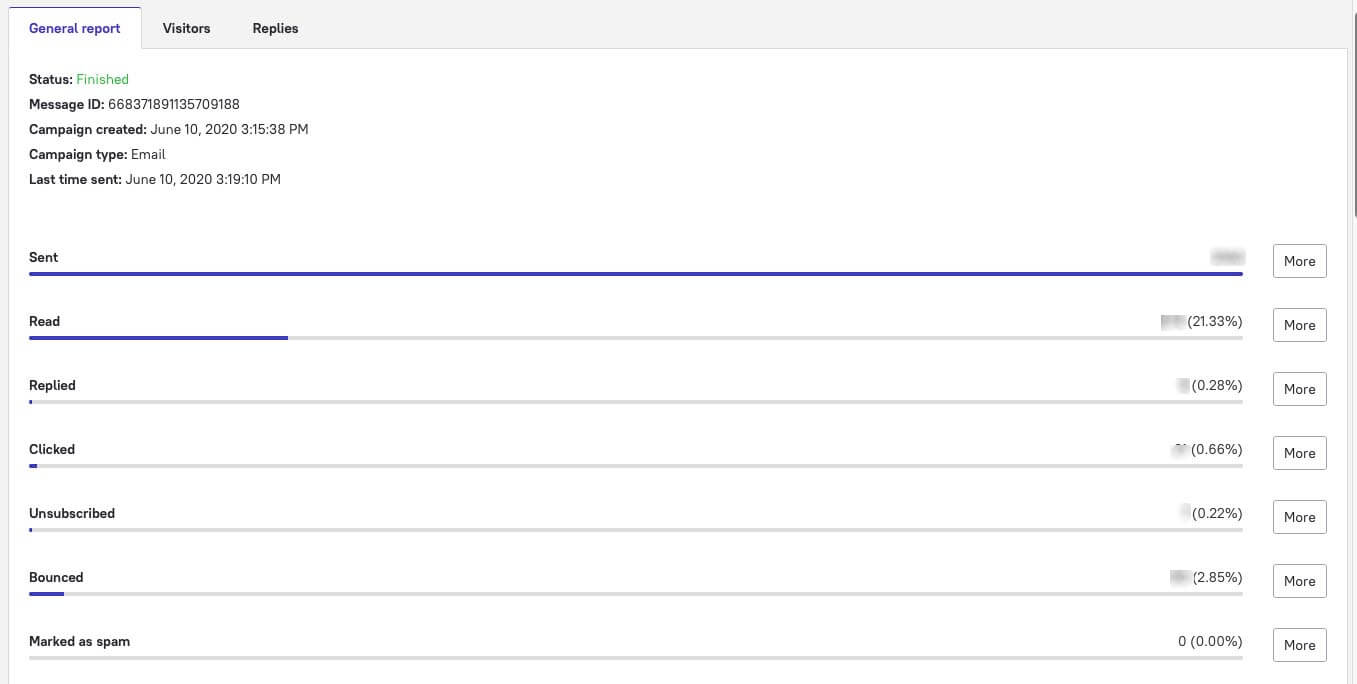
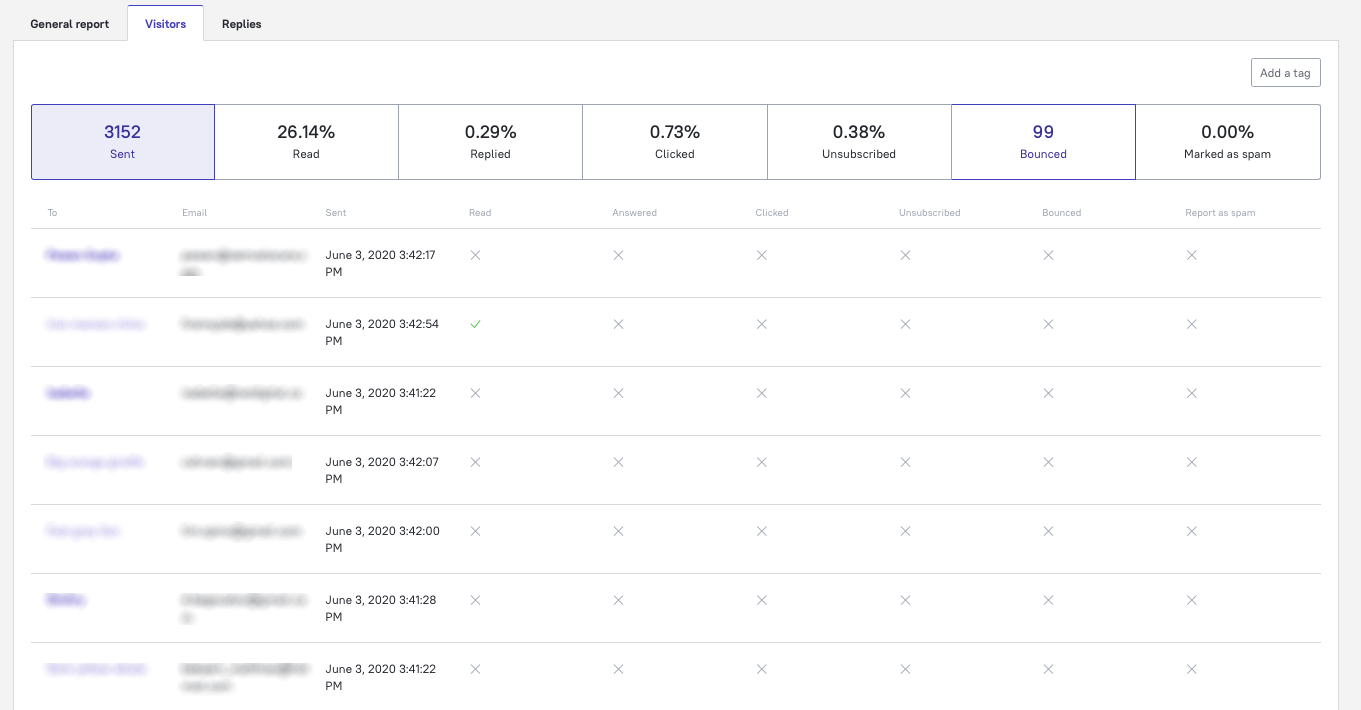
In the same way, you can delete users from the base if they unsubscribed from your emails. Select the Communications: unsubscribed from the campaign trigger and remove the email from your base — this will help you not overpay for those who are not receiving your emails anyway.
Inactive users
You can create a segment of users who have not opened your emails for a long time (half a year, for example). They can be real people skipping your emails or simply not paying attention to them.
For instance, you can get inactive users back by sending them a reactivation email. Here’s how our version of this email looks:

Go through the email performance data and don’t hesitate to remove those who didn’t read it.

The Open Rate of our reactivation email was 6,99%. This is a great result coupled with that subscribers didn’t open our emails for a long time.
This can be even easier — don’t send promotional emails to inactive users. Create a segment of those who are not interested in hearing from you — they can be your actual customers (and quite loyal), but they just don’t have time for reading emails or they are not used to taking them seriously.
We are only sending emails to those who opened our previous emails less than 35 weeks ago:
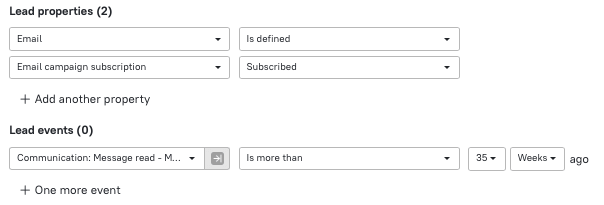
The Golden Rules of Cleaning Up
- Removing from the mailing list doesn’t mean removing from your life. You can still deal with a customer, but remove them from the email subscriber list not to overpay and get your score down. Cleaning up only decreases the number of contacts, not the number of your customers.
- Consider who doesn’t read your emails. See which emails generated most unsubscriptions and spam reports, define mutual trends and work on your bottlenecks.
- Segment and arrange new lists. See how your audience reacts to different emails and arrange different lists. Someone is happy to hear about all your updates, but others only want to get critically important emails.
- Let them go: don’t hide the unsubscription form. You’ll be able to part friends without getting marked as spam and lowering your score.
- Change your plan after cleaning up. The size of your mailing list will probably decrease dramatically, therefore, you can switch to a cheaper plan of your email service.
- Repeat. This is not a one-time event — we recommend cleaning up at least once a year, particularly after large promos and advertising campaigns.
Send fruitful emails and keep your mailing list in order!






